Hoi An is a beautiful city in Vietnam, just south of Da Nang. The Old Town of Hoi An is listed as a UNESCO World Heritage Site.
Hoi An, once known as Faifo, with more than 2,000 years history, was the principal port of the Cham Kingdom, which controlled the strategic spice trade with Indonesia from the 7th to the 10th century and was a major international port in the 16th and 17th centuries – and the foreign influences are discernible to this day.
The culture & heritage is mostly from the Cham people whose kingdom originally stretched from Hue South to Phan Thiet (South of Nha Trang) – the Champa’s most likely originally from Java. The original Cham political capital was Tra Kieu, the commercial capital was Hoi An and the spiritual capital was My Son (Hindu). The Cham people were Hindu, and by the 10th century the influence of Arab traders to Hoi An resulted in some converting to become Muslims.
The second major influence was from the Chinese, firstly from traders but especially the escaping Ming Dynasty armies who after settling in Hoi An for some years moved further south and created Saigon as a major trading port.
The third and last major influence of culture & heritage was from the Vietnamese and is fairly recent and only came after the Cham lost control of this area. For a tourist wanting Vietnamese culture & heritage, Hue is a much better destination than Hoi An (but the weather is much rougher too!).
While the serious shipping business has long since moved to Da Nang, the heart of the city is still the Old Town, full of winding lanes and Chinese-styled shophouses, which is particularly atmospheric in the evening as the sun goes down. While almost all shops now cater to the tourist trade, the architecture has been largely preserved, which is unusual in Vietnam, and renovation has proceeded slowly and carefully – it’s mercifully absent of towering concrete blocks and karaoke parlours.
The culture & heritage that UNESCO World Heritage Site status for Hoi An Ancient Town was trying to preserve has long since gone. Since 1999, when UNESCO WHS status was awarded, there has been a massive increase in tourism – with the result that most houses have been sold by the community to speculators and shop owners to be used for commercial purposes. The former community, and with it their culture and heritage, has gone and in their place are endless indistinguishable shops, restaurants, art galleries, etc. There are literally hundreds of tailor shops in Hoi An.
UNESCO Biosphere Reserve status also applies for Hoi An Ancient Town, but in reality this status, like many other UNESCO statuses, is not being cherished by site management.
The main thoroughfare in the Old Town is Tran Phu. Just south of the Old Town, across the Thu Bon River, are the islands of An Hoi to the west, reachable via Hai Ba Trung, and Cam Nam to the east, reachable via Hoang Dieu.
Hoi An is known for clothing and shoes, with more than 600 shops catering to a very limited pool of tourists. Walk some of the streets outside the old town and you will see open-fronted workshops operating all hours where the clothes are made.
History
Between the seventh and 10th centuries, the Cham (people of Champa) controlled the strategic spice trade and with this came tremendous wealth. The former harbour town of the Cham at the estuary of the Thu Bồn River was an important Vietnamese trading centre in the 16th and 17th centuries, where Chinese from various provinces as well as Portuguese, Japanese, Dutch and Indians settled. During this period of the China trade, the town was called Hai Pho (Seaside Town) in Vietnamese.
Originally, Hai Pho was a divided town with the Japanese settlement across the “Japanese Bridge” (16th-17th century). The bridge (Chùa cầu) is a unique covered structure built by the Japanese, the only known covered bridge with a Buddhist temple attached to one side.
The early history of Hội An is that of the Cham. These Austronesian-speaking Malayo-Polynesian peoples created the Champa Empire which occupied much of what is now central and lower Vietnam, from Huế to beyond Nha Trang.[citation needed] Various linguistic connections between Cham and the related Jarai language and the Austronesian languages of Indonesia (particularly Acehnese), Malaysia, and Hainan has been documented. In the early years, Mỹ Sơn was the spiritual capital, Trà Kiệu was the political capital and Hội An was the commercial capital of the Champa Empire – later, by the 14th century, the Cham moved further down towards Nha Trang. The river system was used for the transport of goods between the highlands, inland countries of Laos and Thailand and the low lands.
In 1535 Portuguese explorer and sea captain António de Faria, coming from Da Nang, tried to establish a major trading centre at the port village of Faifo.[5] Hội An was founded as a trading port by the Nguyễn Lord Nguyễn Hoàng sometime around 1595. The Nguyễn lords were far more interested in commercial activity than the Trịnh lords who ruled the north. As a result, Hội An flourished as a trading port and became the most important trade port on the East Vietnam Sea. Captain William Adams, the English sailor and confidant of Tokugawa Ieyasu, is known to have made at least one trading mission to Hội An (around 1619).[citation needed] The early Portuguese Jesuits also had one of their two residences at Hội An.
In the 18th century, Hội An was considered by Chinese and Japanese merchants to be the best destination for trading in all of south-east Asia, even Asia. The Japanese believed the heart of all of Asia (the dragon) lay beneath the earth of Hội An.[citation needed] The city also rose to prominence as a powerful and exclusive trade conduit between Europe, China, India, and Japan, especially for the ceramic industry. Shipwreck discoveries have shown that Vietnamese and Asian ceramics were transported from Hội An to as far as Sinai, Egypt.
Hội An’s importance waned sharply at the end of the 18th century because of the collapse of Nguyễn rule (thanks to the Tây Sơn Rebellion – which was opposed to foreign trade).[citation needed] Then, with the triumph of Emperor Gia Long, he repaid the French for their aid by giving them exclusive trade rights to the nearby port town of Đà Nẵng. Đà Nẵng became the new centre of trade (and later French influence) in central Vietnam while Hội An was a forgotten backwater. Local historians also say that Hội An lost its status as a desirable trade port due to silting up of the river mouth. The result was that Hội An remained almost untouched by the changes to Vietnam over the next 200 years.
Today, the town is a tourist attraction because of its history, traditional architecture and crafts such as textiles and ceramics. Many bars, hotels, and resorts have been constructed both in Hội An and the surrounding area. The port mouth and boats are still used for both fishing and tourism
Heritage and tourism
In 1999, the old town was declared a World Heritage Site by UNESCO as a well-preserved example of a south-east Asian trading port of the 15th to 19th centuries, with buildings that display a unique blend of local and foreign influences. According to the UNESCO Impact Report 2008 on Hội An, tourism has brought changes to the area which are not sustainable without mitigation.
Due to the increased number of tourists visiting Hoi An a variety of activities are emerging which allow guests to get out of the old quarter and explore by motorbike, bicycle, Kayak or motorboat. The Thu Bon River is still essential to the region more than 500 years after António de Faria first navigated it and it remains an essential form of food production and transport. As such kayak and motorboat rides are becoming an increasingly popular tourist activity
This longtime trading port city offers a distinctive regional cuisine that blends centuries of cultural influences from East and Southeast Asia. Hoi An hosts a number of cooking classes where tourists can learn to make cao lầu or braised spiced pork noodle, a signature dish of the city. This culinary experience has become an increasingly popular activity for visitors
The Hoi An wreck, a shipwreck from the mid-to-late fifteenth century, was discovered off the coast of the city in the 1990s. A few years later, it was excavated; thousands of ceramics were discovered.[citation needed] Museum
The city has four museums highlighting the history of the region. These museums are managed by the Hoi An Center for Cultural Heritage Management and Preservation. Entrance to the museum is permitted with a Hoi An Entrance Ticket.
The Museum of History and Culture, at 13 Nguyen Hue St, was originally a pagoda, built in the 17th century by Minh Huong villagers to worship the Guanyin, and is adjacent to the Guan Yu temple. It contains original relics from the Sa Huynh, Champa, Dai Viet and Dai Nam periods, tracing the history of Hoi An’s inhabitants from its earliest settlers through to French colonial times.
The Hoi An Folklore Museum, at 33 Nguyen Thai Hoc St, was opened in 2005, and is the largest two-storey wooden building in the old town, at 57m long and 9m wide, with fronts at Nguyen Thai Hoc St and Bach Dang St. On the second floor, there are 490 artifacts, organised into four areas: plastic folk arts, performing folk arts, traditional occupations and artifacts related to the daily life of Hoi An residents.
The Museum of Trade Ceramics is located at 80 Tran Phu St, and was established in 1995, in a restored wooden building, originally built around 1858. The items originating from Persia, China, Thailand, India and other countries are proof of the importance of Hội An as a major trading port in South East Asia.
The Museum of Sa Huỳnh Culture, is located at 149 Tran Phu St. Established in 1994, this museum displays a collection of over 200 artifacts from the Sa Huỳnh culture – considered to be the original settlers on the Hội An site – dating to over 2000 years ago. This museum is considered to be the most unusual collection of Sa Huỳnh artefacts in Vietnam
The Precious Heritage Museum is located at 26 Phan Boi Chau. A 250m2 display of photos and artifacts collected by Réhahn during the past 5 years of the French photographer’s explorations of Vietnam. Free entrance [15]
Ancient and peaceful, Hoi An is one of the most popular destinations in Vietnam that caters to travellers of all tastes and across the continents. The little town is just the perfect candidate of what Vietnam tourism ministry is aiming to show to the worl
Warm-hearted, welcoming and traditional, but never out of touch with the outside world, the people of Hoi An are in overdrive mode trying to catch up to the opportunities their new found fame has recently given them.
A History of Asian fusion
A slow stroll through town reveals its gems. Hoi An has to this days well preserved its most sacred treasure, the centuries-old architecture. The town used to harbor foreign traders back in the 17-18th, and once is an important heavily-frequented trading port in Southeast Asia. The foreigners come from all corners of the world, but mostly are Chinese and Japanese nationalities. Some come and go, but many settle in permanently and etch their marks into the history of Hoi An.
Mixing together with Vietnamese design, Chinese and Japanese accents melt and create a picture-perfect Hoi An of the late 19th century, which it has somehow remained mostly intact since. The end product is an oddly strange-yet-familiar sight that exists nowhere else in the world. To this day, few descendants of the foreign traders remain but the architectural setting manages to survive the damage of time.
Little town gathers world fame
In 1999, UNESCO formally recognizes Hoi An as a World Heritage Site. There are the things that make up the reputation. Hoi An is home to many temples, pagodas and the ancient homes that bear its very unique mark. The density of such sites is unlike any other in Vietnam. These places carry with them the history of Hoi An itself. The depiction of its formation, its once-prosperous merchant past, its progress and how it manages to become one of today are all well documented, in words and in priceless relics.
The town is not just reminiscent of the past, it truly takes one for a slow enlightening journey to the past. Such journey is simply unthinkable most elsewhere in Vietnam. It is only possible because of the careful and dedicated works that have gone into preserving and presenting its way – efforts that have come as the result of the UNESCO recognition. Enjoying the spotlight and catering to the increasing number of tourists flooding its narrow streets hoping to catch a glimpse of the past, hotels and resorts are now sprouting up all over town.
Hoi An Accommodation and Shopping
One shall find his accommodation options ranging from lowly affordable motel rooms as low as $8 per day to the world-class 6-star top-of-the-line allegedly-best-in Southeast-Asia Nam Hai resort nearby, which starts at a whooping $600. Vietnam may be small, but there will always be an extra bedroom for the staying- over guest. These days, the guests may well outnumber the homeowners however. True to its origin, Hoi An today still boasts a booming trade.
Of the things sold in town, there are only 3 different categories. First is souvenir, the second being clothing and the last is food, both western and Vietnamese. The souvenir is not something to write home about, since offerings are limited in diversity throughout the country. Hoi An is better known for its tailor shops, which mostly service personal bespoke orders. Tourists circulate rumor that people stay in this little sleepy town for entire weeks doing nothing, waiting just to have their shirts made to the perfect fit. Most designs are traditional Vietnamese in nature, with some offer contemporary twists and touches of foreign taste as well.
Coupled with the right prices, Hoi An is truly a shoppers’ paradise, one that dictates its western customers on a unique oriental sense of style. Paradox does not end. One imagines never being able to find western food in such a hardcore Vietnamese setting. That turns out not the case. Hoi An is home to multiple restaurants that serve big hearty American meals with only a small portion of the menu dedicated to local food. The locals prefer their sidewalk vendors to the many re-innovated house-turned-restaurants out there.
Of Food and Cuisines
There is no shortage of bacon in town, but cao lầu is the dish that one simply can not miss. Prices and service are rightfully on par with the latest venues in major cities like Hanoi and Ho Chi Minh. Yet in the face of all the hurrying capitalist business going on, for some reason, somehow, Hoi An retains its quite serenity. Life just seems to flow by at an uneventful rate. People seem to slowly enjoy things as they are. While foreigners come to experience the old way, natives also come to Hoi An for a break in the hustling busy path of life.
And it is in Hoi An that their inner peace shall be found, paradoxically in the face of all the money being changed hand. As for a fitting end to a story of many extremes, Hoi An is, sadly, situated in one of the poorest provinces in the country. Apart from the glamour of the tourism-enriching little town, Quang Nam’s population generally lives at the poverty line level. A typical drive from Danang’s airport or train station to Hoi An soon enough will reveal all the stories that are silently told.

![[Ninh Thuận] vẻ đẹp hoang sơ Bãi Hỏm [Ninh Thuận] vẻ đẹp hoang sơ Bãi Hỏm](/img/300x200/khampha/2017/08/bai-hom-ninh-thuan-khamphadisan-1.jpg)
![[Hà Nội] ngày hội văn hóa – du lịch Huế sẽ diễn ra tại Hà Nội [Hà Nội] ngày hội văn hóa – du lịch Huế sẽ diễn ra tại Hà Nội](/img/300x200/khampha/2017/10/ngay-hoi-du-lich-hue-khamphadisan-2.jpg)
![[Bình Dương] Làng tre Phú An – khu bảo tồn tre lớn nhất tại Việt Nam [Bình Dương] Làng tre Phú An – khu bảo tồn tre lớn nhất tại Việt Nam](/img/300x200/khampha/2017/08/lang-tre-phu-an-binh-duong-khamphadisan-5.jpg)
![[Bạc Liêu] khám phá vườn nhãn cổ hơn trăm năm tuổi tại Bạc Liêu [Bạc Liêu] khám phá vườn nhãn cổ hơn trăm năm tuổi tại Bạc Liêu](/img/300x200/khampha/2017/10/vuon-nhan-co-bac-lieu-khamphadisan-4.jpg)

![[Tài liệu thuyết minh] Đi tìm ý nghĩa niên hiệu các Hoàng Đế dưới Triều Nguyễn [Tài liệu thuyết minh] Đi tìm ý nghĩa niên hiệu các Hoàng Đế dưới Triều Nguyễn](/img/300x200/khampha/)


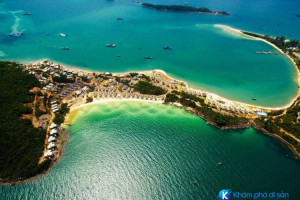
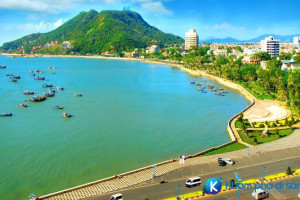
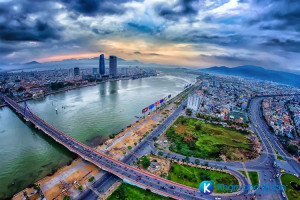


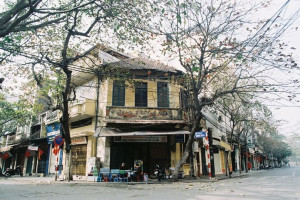
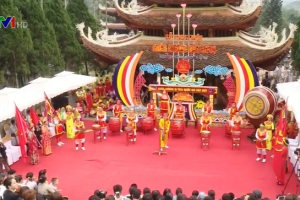






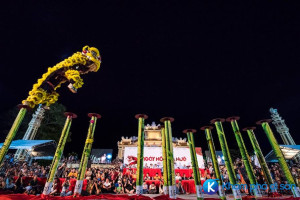
![[Video] Tour du lịch hoàng hôn trên phá Tam Giang – Công ty Du Lịch Đại Bàng [Video] Tour du lịch hoàng hôn trên phá Tam Giang – Công ty Du Lịch Đại Bàng](/img/300x200/khampha/2017/07/canh-dep-tren-pha-tam-giang-2.jpg)